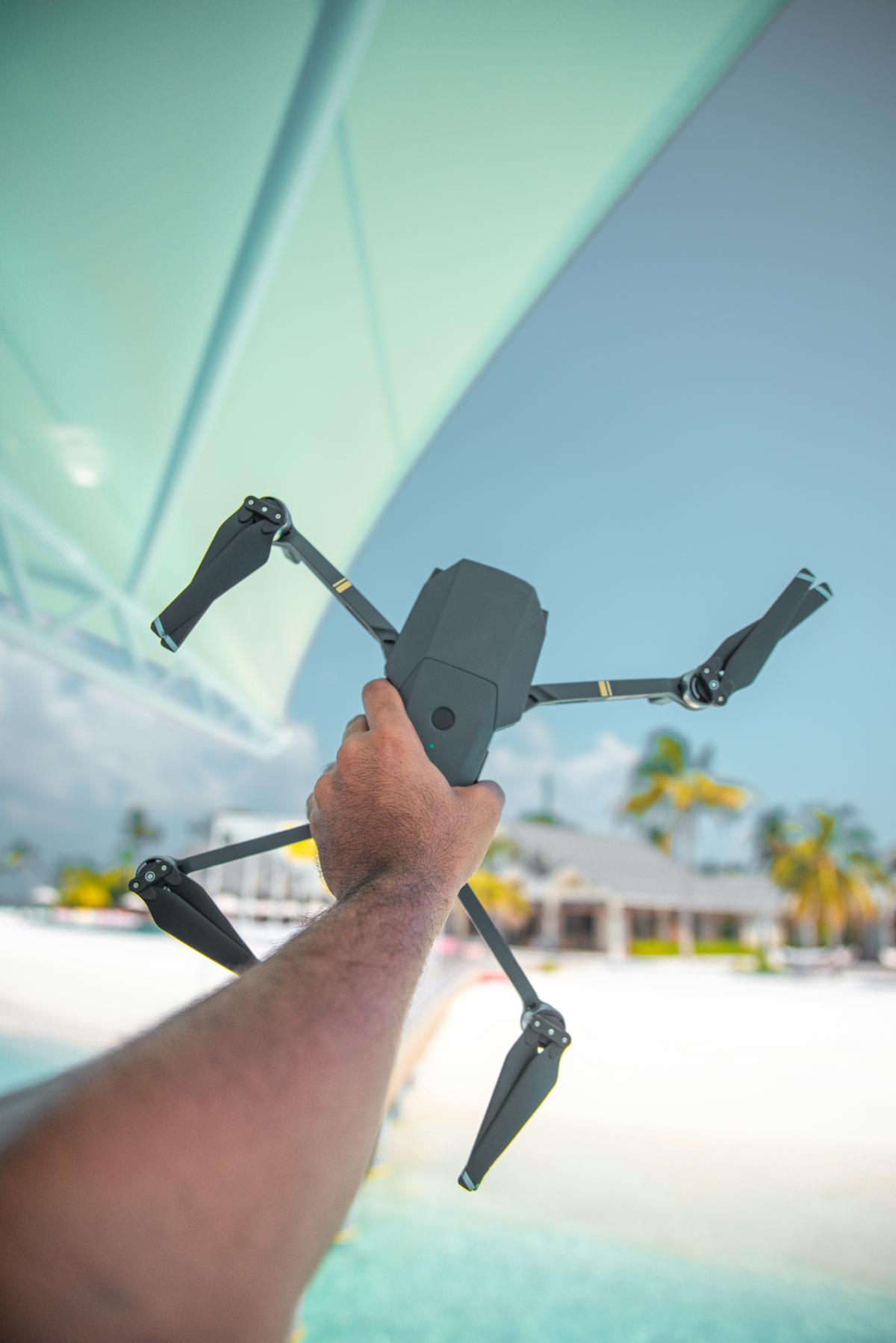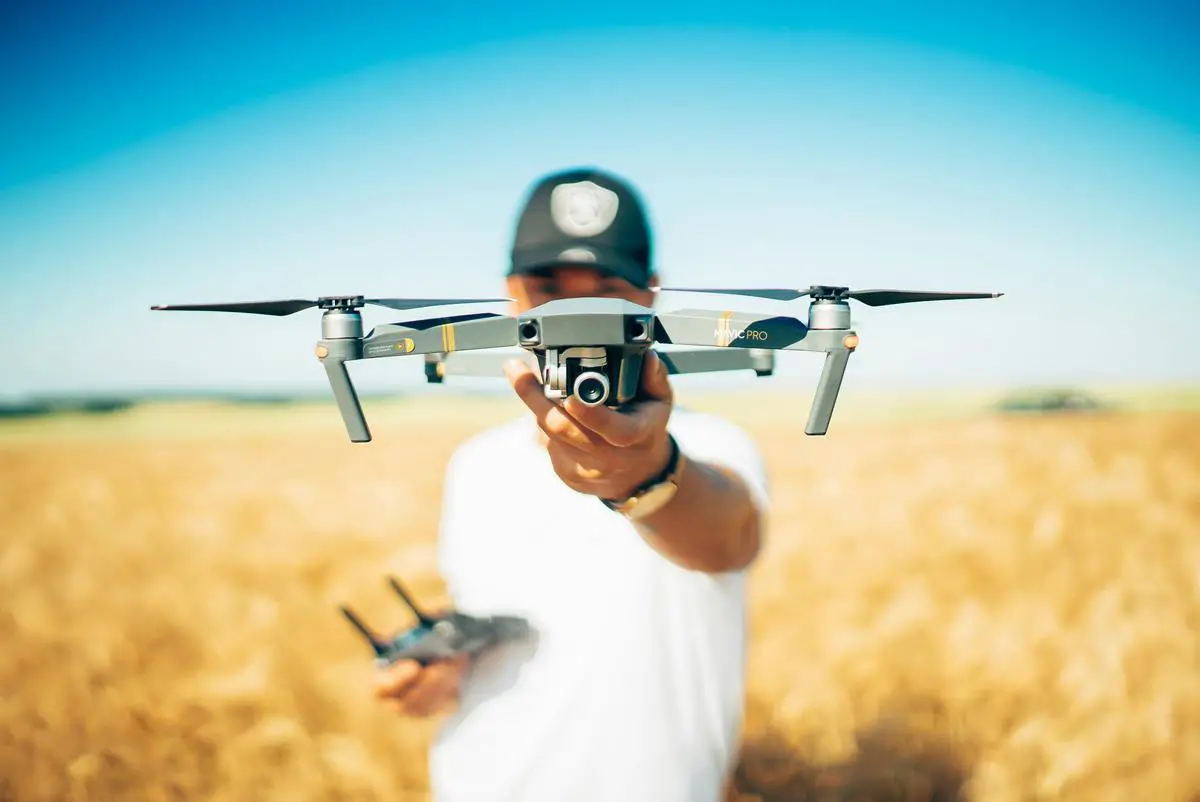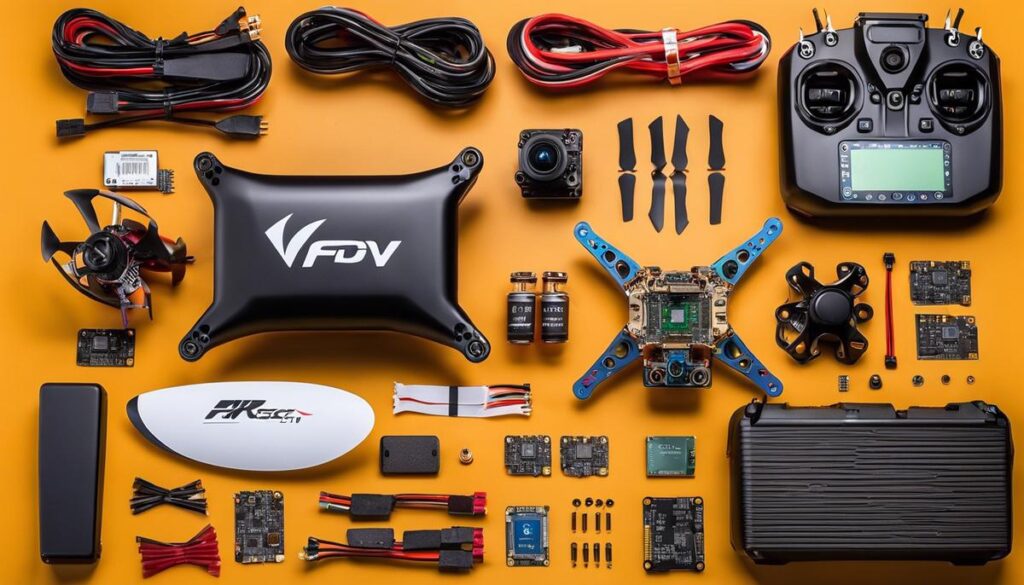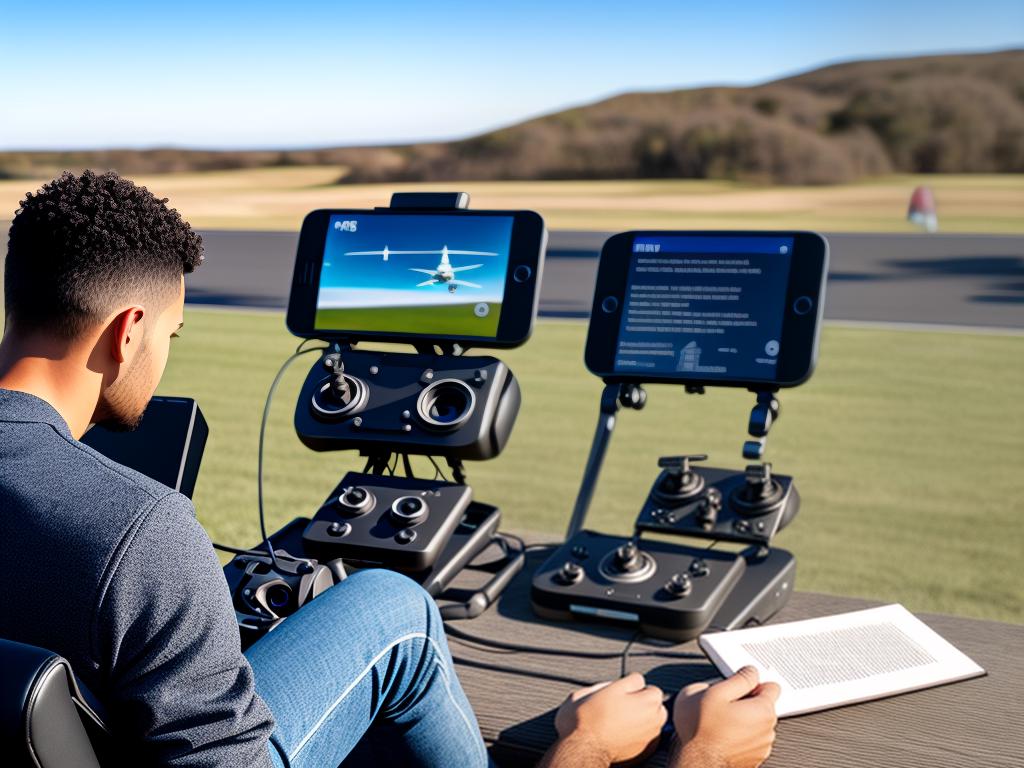Diving into the realm of FPV (First Person View) drones offers an electrifying mix of high-octane thrills and intricate technical know-how. For enthusiasts eager to understand and craft their own high-speed quadcopter, grasping the fundamentals and complexities of FPV drone components is the first step toward aerial mastery. By demystifying the anatomy of these remarkable machines—from the resilient frame that forms its backbone to the buzzing motors, nimble ESCs, and the cerebral flight controller, down to the FPV camera that offers a bird’s eye view—we begin to unlock the potential to not just fly but to soar. Join us as we embark on a hands-on journey of constructing and piloting your very own FPV drone, an endeavor that promises both challenges and exhilarating triumphs, ideal for those with a passion for the sky.
Understanding FPV Drone Components
Navigating the Skies: A Beginner’s Guide to FPV Drone Essentials
When delving into the world of First Person View (FPV) droning, it’s like stepping into a pilot’s seat without ever leaving the ground. As enthusiasts, we thrive on the thrill of the flight, the freedom of the skies, and the technical prowess that comes with piloting. For those just starting to build or purchase their first rig, understanding the fundamental components of FPV drones is vital to ensuring a successful and exhilarating flight experience. Let’s soar through the essentials that make these magnificent flying machines tick.
Frame
The skeleton of an FPV drone is its frame – typically made from materials such as carbon fiber or plastic. The frame’s design influences everything from stability to durability. It houses all the other components and, depending on its configuration, can affect the drone’s aerodynamics. Choose wisely, as it serves as the critical backbone of your build.
Motors
The workhorses of your FPV drone are undoubtedly its motors. Usually, one per propeller, these mini power-plants dictate the speed and lifting power of the drone. Brushless motors are the go-to for their efficiency and longevity. Be sure to align the motor’s thrust capabilities with the total weight of your build for optimal performance.
Electronic Speed Controllers (ESC)
The ESCs are the conductors, commanding the rhythm and pace of the motors. They manage the electrical flow from the power source to the motors, controlling speed through precise adjustments. For responsive handling and smooth flights, ensure ESCs are compatible with the motors and power requirements of your drone.
Flight Controller
The flight controller is the brain of the operation. This little onboard computer processes inputs from the pilot and makes split-second adjustments to keep the drone stable and responsive. It’s equipped with sensors such as gyroscopes and accelerometers to gauge movement and orientation. Selecting a reliable flight controller is crucial for smooth piloting.
Propellers
Propellers are essentially the wings of the drone, providing lift and thrust when spun by the motors. Material and size impact their performance, efficiency, and the overall responsiveness of the drone. Lightweight and well-balanced propellers can make or break the flight experience.
Power Supply
Drones are thirsty devices, and a powerful battery is their well of energy. Lithium Polymer (LiPo) batteries are the standard, offering a decent balance between weight and capacity. It’s pivotal to match the power supply to the drone’s consumption needs to maximize flight time without overburdening the craft.
FPV Camera and Video Transmitter (VTx)
For that immersive flight experience, an FPV camera is mounted at the front of your drone, capturing live video feed. The VTx broadcasts this feed to your goggles or monitor. Clarity, range, and latency are vital considerations for these components, as they provide real-time visuals for navigation and flight enjoyment.
Receiver (Rx) and Transmitter (Tx)
Communication is key, and the receiver and transmitter play pivotal roles. The transmitter is your handheld control station, sending your commands to the receiver onboard the drone. Ensuring a solid, interference-free connection means you maintain control of your craft for safe and precise flying.
Antennas
Without dependable antennas, the critical communication between your drone and its controls might as well be whispers in a storm. These unsung heroes maintain a strong and clear transmission signal for both control and FPV feed. Quality and placement of the antennas greatly impact range and signal clarity.
FPV Goggles or Monitor
The eyes to your aircraft, FPV goggles, or a dedicated monitor, receive the video feed transmitted from the drone. They enable you to see from the drone’s perspective. Go for a set that offers comfort, good resolution, and a wide field of view for the most immersive flight experience.
As pilots, every component we select shapes our flights. Whether we’re chasing the sun’s final rays or weaving through a forest, our FPV drone’s performance relies on the harmonious blend of these essentials. In the sky’s vast canvas, our prowess and our drones’ capabilities fuse, crafting an experience that reminds us why we fell in love with this hobby in the first place. Now, fellow hobbyists, it’s time to take off!

Assembly of FPV Drone Kit
Assembling an FPV drone from a kit is a methodical process, and while the previous segments have covered individual components, from the frame to FPV goggles, the following instructions will guide through the final assembly for a seamless flight experience.
Step 1: Connect the ESCs to the Motors
Grab the already mounted ESCs and carefully solder the three motor wires to their corresponding ESC pads. It doesn’t matter which wire goes where, but if the motor spins the wrong way later, two wires will need to be swapped.
Step 2: Install the Flight Controller
Secure the flight controller onto the frame using the provided standoffs. Ensure the arrow on the board is pointing towards the front of the drone. Connect the ESC signal wires to the appropriate motor outputs on the flight controller, paying close attention to the correct order.
Step 3: Attach the Power Distribution Board (PDB) or Wire the 4-in-1 ESC
If your kit includes a PDB, secure it and solder the power leads from the ESCs to the board. Alternatively, solder the power leads directly to the 4-in-1 ESC according to the positive and negative pads.
Step 4: FPV Camera and VTx Setup
Mount the FPV camera at the front of the drone, ensuring a clear field of view and slight tilt for faster flight. Connect the camera to the VTx, which is typically mounted at the back for optimal signal dispersion. Make sure to connect power, ground, and video signal wires correctly.
Step 5: Receiver Installation
Mount the receiver (Rx) securely and connect it to the flight controller. Attach the antenna properly to avoid damage during flights. The exact wiring depends on the type of receiver protocol used, such as SBUS or PPM.
Step 6: Antenna Attachment
Screw the antennas onto the VTx and receiver. It’s important to make sure these are protected and as far from each other as possible to reduce interference.
Step 7: Final Wiring Check
Ensure that all wires are neatly tucked and secured away from moving parts, such as propellers. Use zip ties and shrink tubing to keep everything in place and protected.
Step 8: Propeller Installation
Mount the propellers onto the motors, being sure to match the correct propeller type (CW or CCW) to the motor direction. Use a propeller nut or self-locking mechanism to secure each propeller.
Step 9: Software Setup
Connect the flight controller to your computer and use the appropriate software to configure your drone’s settings, including motor direction, flight modes, and PID tuning.
Step 10: Pre-Flight Check
Before taking off, perform a thorough pre-flight check. Verify all components are secure, the battery is properly attached, and the transmitter and receiver are correctly bound. Check the motor spin direction, and ensure the propellers are installed correctly to avoid any mishaps.
With these final steps, the careful assemblage of an FPV drone kit stages a harmonious symphony of technology that’s poised to take to the skies. Fuel-up with the appropriate battery, don the FPV goggles, and get ready for an adrenaline-fueled adventure through the pilot’s eyes. Happy flying!

Photo by davidhenrichs on Unsplash
Basic Piloting and Safety
Continuing from the intricate setup steps, it’s time to hone the skills needed for flying FPV (First-Person View) drones safely and proficiently. Here are the steps that one should follow to not only enjoy the hobby but to excel in it:
Understand the Basics of Flight Dynamics
Before even starting the motors, it’s crucial to grasp the fundamental flight dynamics of a drone. This involves understanding how pitch, roll, yaw, and throttle control the movement of the drone in space. Utilizing simulators can expedite this learning process without the risk of damaging actual equipment.
Practice on a Simulator
Simulators are invaluable in the FPV community. With realistic physics, they replicate the flight experience and allow pilots to practice maneuvers without the consequence of crashing. Investing hours in a simulator can translate to increased confidence and skill when piloting a real drone.
Start with a More Forgiving Drone
While it may be tempting to jump straight into flying high-performance FPV drones, beginning with a less powerful and more forgiving model can be beneficial. These starter drones can withstand crashes better and offer a gentler learning curve.
Gradual Exposure to FPV Flying
Once comfortable with line-of-sight flying, slowly transition to FPV flying using goggles or a monitor. This can be disorienting at first, so it’s essential to begin in a safe, open area free from obstacles and distractions.
Learn the Legalities and Safety Measures
Have a comprehensive understanding of the local laws and regulations regarding drone flights. Always adhere to guidelines related to altitude, proximity to people and private property, and no-fly zones. Safety is paramount. Ensure your flights do not pose risks to others or to property.
Join an FPV Community
Connecting with other enthusiasts can tremendously bolster learning. FPV communities, both online and in-person, offer opportunities to gain insights, share experiences, and receive constructive feedback.
Regularly Maintain Your Drone
Ensure your equipment is in prime condition by performing regular checks and maintenance. This includes examining the condition of propellers, securing loose connections, and regularly updating the software.
Set Goals for Each Flying Session
Having specific objectives for each flight can lead to focused improvement. This could be mastering a new maneuver, increasing flight time, or improving control precision. Track progress and challenge yourself gradually.
Analyze Your Flights
Reviewing recorded flights can reveal mistakes and areas of improvement. This feedback loop is crucial in refining skills and expanding pilot capabilities.
Remember, proficiency is not achieved overnight. Persistence, patience, and continual learning are the keys to excelling in flying FPV drones. Happy flying!

Embarking on the journey of building and piloting FPV drones transforms you from a mere spectator to a skilled architect of the skies. With every component meticulously assembled, each solder joint carefully placed, and the thrum of propellers finally springing to life, the satisfaction of creating a finely tuned aerial vehicle is unparalleled. The skills developed through this process go beyond the workbench; they inspire confidence and proficiency in the complex skies above. As you continue to hone your piloting abilities, the sky becomes not just a playground, but a canvas for boundless exploration and innovation. May your flights be smooth, your horizons broad, and your adventures in the vast blue yonder fuel your passion for drone flight for years to come.
Originally posted 2024-01-18 03:05:53.



